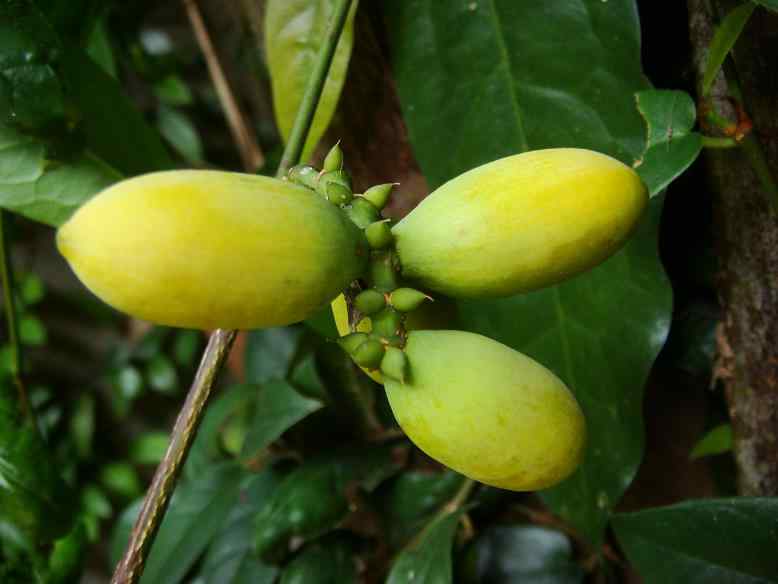Description: Gnemon, also known by the scientific name Gnetum gnemon, is an evergreen tree that grows from 8-15 m tall.
The leaves are oblong-oval in shape and are 15-25 cm long and 5-9 cm wide. Gnemon is not strictly a flowering plant, as the seeds are not produced in an enclosed ovary. Instead, both pollen and ovules are produced in cones. The pollen producing cones are smaller than the ovule producing cones and look like catkins with the pollen grains visible as dust around the cones when the pollen is released. The ovule producing cones are an aggregation of many seeds arranged in compact whorls. A thin, orange-red, fleshy outer covering encloses each seed. This covering is actually an extension of the cup-like structure on which the seed rests.
Geographic Distribution: Gnemon is native to Southeast Asia and islands in the western Pacific including Fiji, Indonesia, Malaysia, Papua New Guinea, the Philippines, and Vanuatu.
The tree grows in lowland rainforests at elevations below 1700 m. This species is widely cultivated in homegardens and orchards.
Food Uses: Many parts of Gnemon are used for food. The leaves are used to wrap food and as a vegetable and the seeds are eaten raw, boiled or roasted.
In Vanuatu the leaves and young cones are boiled and flavored with coconut cream for consumption. In Papua New Guinea the leaves and young cones are cooked with meat. In Indonesia the mature seeds are ground into flour that is made into a flat cake, fried, and eaten as crackers. The fleshy coating of the seed is also fried which produces a chewy snack. These products constitute an important home industry in Indonesia.
Preservation and Conservation Strategies: This species is an important agroforestry tree in southeast Asia as it grows quite quickly, is both light and shade tolerant, and is resistant to cyclones.
Gnemon is planted as an intercrop among Durian (Durio spp.) and Rambutan (Nephelium lappaceum). In Indonesia it is intercropped with Breadfruit (Artocapus camansi) and Screwpine (Pandanus spp.) orchards. It is easily propagated from seed or by transplanting seedlings that establish under trees. The plant produces numerous resources that are used by humans therefore it is often cultivated in home gardens. While this tree can grow up to 15 m tall, it can also be pruned to size therefore it is suitable as an ornamental.


